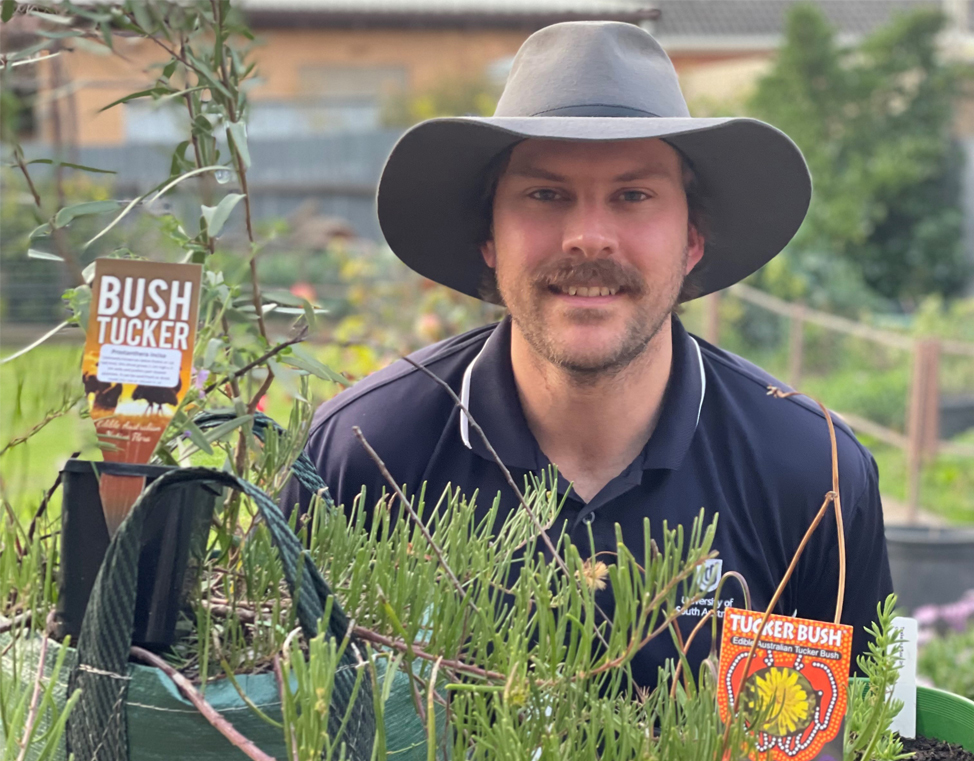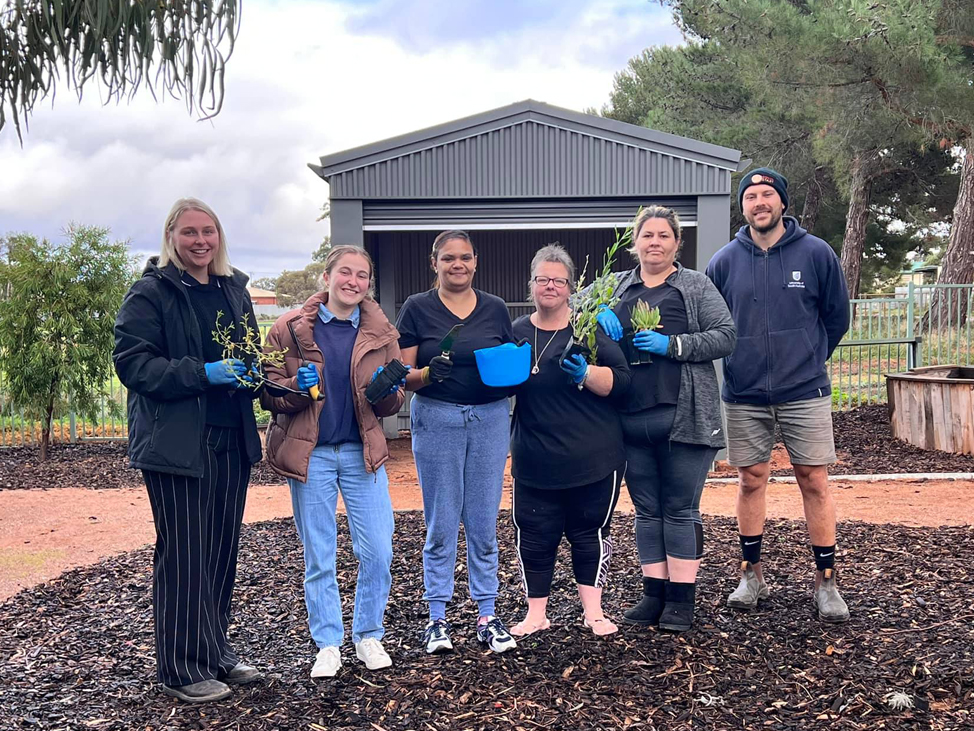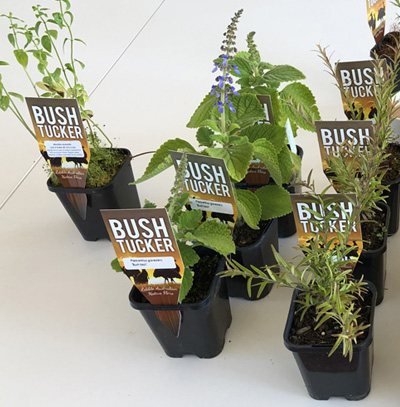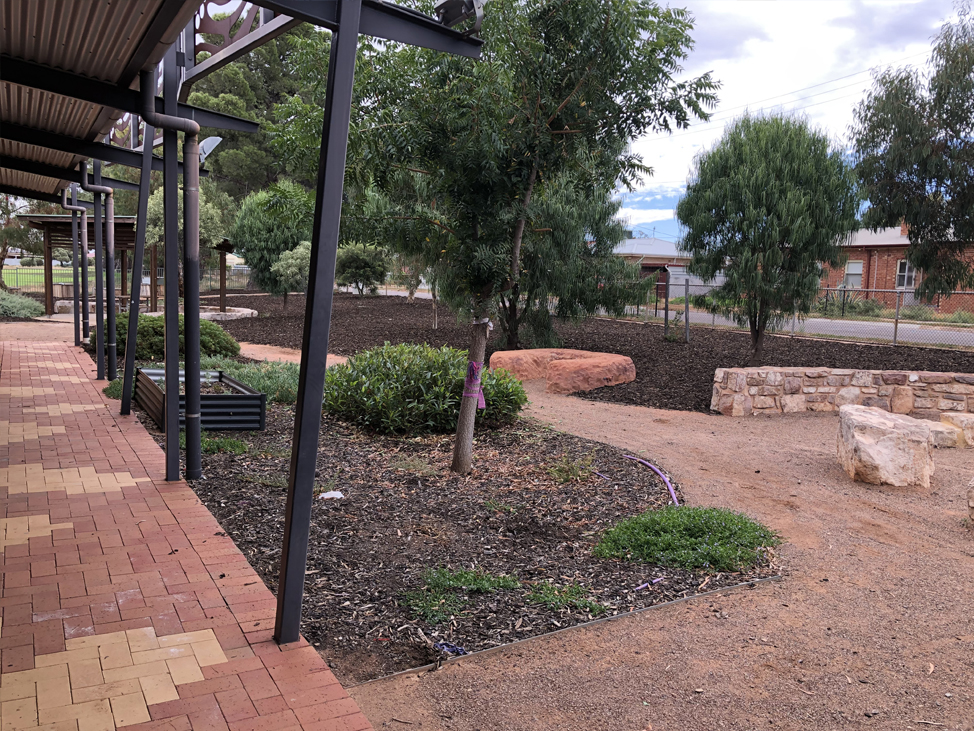- connecting our global business alumni network
12 September 2022
From Little Things Big Things Grow
Family camping trips to the Flinders Ranges and Yorke Peninsula for a young Michael Watkins often involved learning about bush foods and the country. Little did he know that what he learned back then about wild harvesting would later form the basis of his studies and academic career at UniSA.

Michael Watkins
Masters of Aboriginal Studies
Bachelor of Nutrition and Food Science
Michael Watkins and his brother and sister are of Italian heritage through their mother and Mudburra/Jingili heritage through their father. “Like a lot of Aboriginal people and communities today, my nanna was impacted by the stolen generation – she was brought up on Garden Point Mission on Melville Island,” he says. “I am hopeful that I can use my position, and the privilege of being able to access the level of education I have had, to contribute back to our communities today through the teaching and research I am involved in.”
Both Michael’s mother and father were the first in their family to attend university and while Michael felt some level of expectation, he knew he too wanted to further his education beyond high school. Circumstances led to a slightly circuitous route into a degree in Nutrition and Food Science, but he feels he got there in the end. “I was really well supported by the Aboriginal Student Support Services and the staff – and also, fellow Aboriginal students who were doing the same course pathway,” he says.
Originally Michael’s interest lay in nutrition and public health, and he admits he found the chemistry challenging, but as he progressed all the elements came together. “I really got to understand more of the food science and food technology aspect towards the back end of my degree. When we were analysing some of the bush foods and their nutritional properties in a lab-based setting … that was when it started to click for me.”
After graduation Michael seized an opportunity to relocated to Whyalla, splitting his time between Wirringka Student Services and a part-time role with the UniSA’s Department of Rural Health (DRH). Any misgivings about moving away from Adelaide were quickly dispelled. “It ended up being one of the best decisions I’ve made in terms of my role and development,” he says. Within 12 months the DRH role became fulltime and he began to “dabble” in teaching and research.
Today, Michael is back in Adelaide as a lecturer in Aboriginal Allied Health with the DRH. “It’s a big step up to move into a career in academia and research, not only in terms of the expectations, but also the roles and responsibilities, and the work outputs that are required.” Michael now confidently collaborates with community, other researchers in the DRH and across the broader University, including one of his previous lecturers. “Here I was, someone in their late 20s, leading a team of experienced researchers who were looking to me for guidance and direction.”

SOURCE: Gabmididi Manoo Children and Family Centre
In 2020 Michael was able to help Gabmididi Manoo Children and Family Centre in Whyalla secure a state government Healthy Towns Grant to establish a bush foods garden. Working alongside the Centre’s Aboriginal Women’s Yarning Group, the project aims to achieve the dual goals of facilitating the intergenerational transfer of Aboriginal knowledge around plants, culture and foods while also establishing a platform of rigorous evaluation of potential cultural health and well-being outcomes.
Michael had been scoping across regional SA when he heard about Gabmididi Manoo’s Yarning Group who were meeting to support each other, presenting projects and activities, and wanting to establish a bush foods garden. “We sat down with them and did some yarning, needs analysis and conceptualising. It’s Barngarla country but there are whole lot of other cultural and language groups living in Whyalla who are away from their traditional lands. A garden was seen as a way to bring Country into that setting while also being an education site for young kids and community.”

you’ll find Acacia species, quandongs, Eremophila
species, muntries and many more
With the garden now planted, the community, which extends to the adjacent primary school, is literally reaping the rewards. Although local bush foods can still be wild harvested, growing their own makes them much more readily available and allows the group to provide education on how such foods can form part of our everyday diet.
Late last year Nutrition and Food Science students on placement visited Gabmididi to talk about the Australian Guide to Healthy Eating. Substituting ingredients (some harvested from the garden) the group was able to prepare and enjoy wattle seed scones, quandong jam and warrigal green quiche. “Learning about bush foods ties in nicely with general healthy eating principles – and food, cooking, nutrition, and literacy are all tied into that – but it’s really important to foster cultural learning environments. And not just for young Aboriginal people but Aboriginal community members as well.”
Looking beyond the physical benefits of eating produce full of antioxidants or vitamins, Michael is researching the impact on cultural health, well-being, and education. “We’ve planted more than 20 species now and can wild harvest and then give cooking lessons. This is nothing new or innovative, but we want to bring it all together to highlight the potential outcomes,” he says, and sees such evaluation being applied to other locations, not just regional or remote, and based on other themes. “What does it mean for the Aboriginal community to be involved? How does it impact Aboriginal students to be learning about their culture in a Western school setting?”
It’s been a busy start to the year with the team working hard to get the garden established. “It’s semi-functional. While some plants are quick to grow, others take a couple of years to establish and fruit.” But Michael is fully invested. “What I’m really interested in is three years down the track when a lot of these plants are (hopefully) established and fruiting.” Ideally, they will be harvesting seasonal crops throughout the year.

Michael was inspired by his junior gardeners, most of them under five. “They loved getting out there with their little trowels. That’s been really pleasing … and for the community too.” Such highlights counteract the general challenges of installing the infrastructure with no landscaping know-how and having to co-ordinate contractors. However, the grant funding has allowed for the appointment of a casual project officer to help care for the garden and who is themselves blossoming as they become more knowledgeable about the plants and learn their botanical names.
Michael has been on a similar plant journey. A regular visitor to the Centre, he has sourced many of the plants locally but also from other regions of SA. He’s even started propagating in his suburban backyard and plans to encourage others to do the same so the plants can be handed out to the community.
It’s not all fresh air and sunshine, however, with plenty of behind-the-scenes work required to manage the finances of the project plus continue his research. “The scoping review is integral in highlighting the lack of evaluations done on this, which then feeds into the next, broader phase of our project.” This research and evaluation are will be invaluable when seeking future grants.
So, does Michael Watkins have green thumb?
“Yes, and it’s grown during this project. When you find something you’re passionate about, you just take it to the next level. I’ve been able to find somewhen I can really put my passion to use.”
Keen to try some bush foods in your garden?
Here are some of Michael’s recommendations. Please note some common names can change.
Bush Banana — Marsdenia Australis
Bower Spinach — Tetragonia Implexicoma
Sweet Apple Berry — Billardiera Cymos
Muntries — Kunzea Pomifera
Wattleseed — Acacia Victoriae
Pigface — Carpobrotus rossii
Murnong Yam Daisy — Microseris Lanceolata



